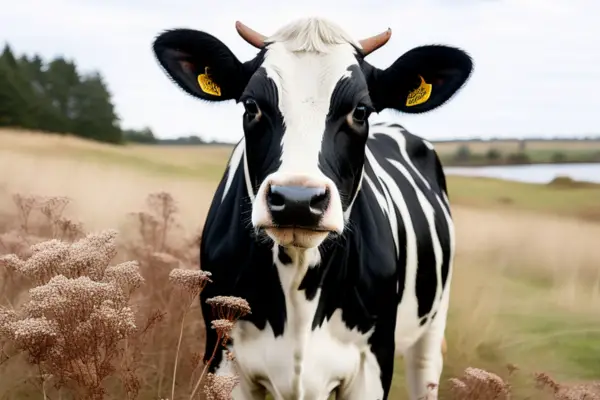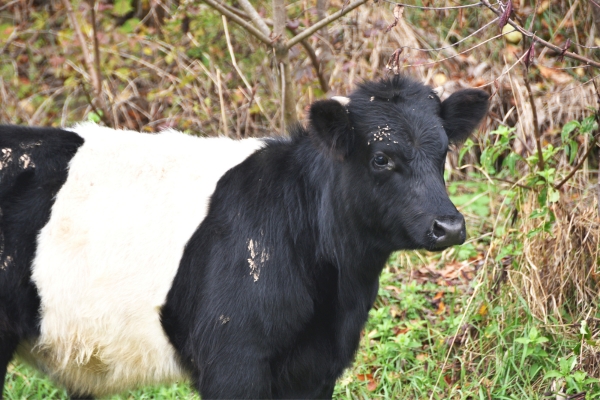Black and white Cow Breeds
Black and white dairy cattle are some of the most iconic and easily recognizable breeds of cows. With their distinctive color patterns of black and white splotches and patches, these Holstein-Friesian-descended breeds are a staple of small farms, homesteads, and large commercial dairy operations around the world.
In this blog article, we’ll explore some of the most popular black and white dairy cow breeds, looking at their origins, characteristics, uses, and why their black and white coloring has endured and proliferated across numerous dairy cattle bloodlines.
1. Holstein

The Holstein is by far the most popular and widely-used black and white dairy breed. Originating from northern Holland and Friesland in Europe, Holsteins have been selectively bred over the last 2,000 years for their outstanding milk production.
In fact, the average modern Holstein can produce over 25,000 pounds of milk per year, making them the highest production dairy cattle breed in the world. They’re now found on dairy farms across Europe, North and South America, Africa, Asia, and Australia.
In addition to their high milk yields, Holsteins are favored for their placid, docile temperaments. While bulls can be aggressive, cows are noted for being easy to handle and having gentle dispositions, making calf and milk management easier.
Physically, Holsteins have the archetypal black and white patterning, with white usually dominating the majority of the body and head and distinct black patches appearing randomly across the animal. They have large, boned frames with udder structure specially adapted for high milk capacity and flow.
While purebred 100 percent Holsteins are still most common, cross-breeding with other dairy and beef breeds has introduced slight variations. Red and white or brown and white mixes, for example, may still predominately exhibit Holstein genetics and milk production traits.
2. Jersey

Jersey cattle originated on the Channel Island of Jersey in the British Isles. In addition to black and white, they can also commonly exhibit tan, brown, and lighter fawn colorations.
While Jerseys don’t produce as much milk by volume as Holsteins, their milk has a higher butterfat content—up to 5% or more, compared to a typical 3-4% for Holstein milk. This makes Jersey milk excellent for producing premium cheeses, creams, ice creams, and other high-fat dairy products.
In addition, Jerseys convert grass and lower quality feed to milk more efficiently than other dairy breeds. They have good fertility rates and calving ease as well. Their small stature also makes them easy to handle.
For homesteaders and smallholders, Jerseys make an ideal dairy cow for providing all the fresh, wholesome milk a family could need, while requiring lower quality feed sources and pasture to remain highly productive.
3. Milking Shorthorn
The Milking Shorthorn breed comes from England, where it descended from regional Shorthorn cattle but was selected more for its milking ability. Although their numbers declined throughout the 20th century, interest in heritage breeds and their often superior genetics has sparked a resurgence of Milking Shorthorns on pasture-based dairy farms.
Not only do modern Milking Shorthorns continue to produce plenty of milk with a high butterfat content, they also adapt well to grazing systems. They do an excellent job converting grass and other forages into milk.
Hardy and dual-purpose, Milking Shorthorns pull double duty on small farms by providing ample meat as well as milk production. Their docile nature and moderate size also suits them for family cattle keeping.
Colorwise, Milking Shorthorns range from almost pure white to almost pure black, with every combination of black and white patches and spotting in between. They’re one heritage dairy breed where you never quite know what pattern their calves might inherit!
4. Ayrshire
Hailing from Scotland, the red and white Ayrshire is another dairy breed well-adapted to grass-based production systems, though not as common globally as Holstein or Jerseys.
Ayrshire milk has favorable components for butter, cheese, and yogurt production. And Ayrshire cattle are known for having active, curious, and personable temperaments. Their genetics and inclined disposition makes them excellent grazers as well.
Where you find grassland dairy production, you’re most likely to encounter Ayrshire genetics thriving on the cool, wet pastures of regions like Scotland, Ireland, New Zealand, and parts of Canada. Their natural grazing ability and endurance for marginal, mountainous terrain suits them perfectly for these climates and geographies.
Although not always black and white patterned, Ayrshires do frequently exhibit some spotting, especially a splash of white on their face or across their backs. Along with their reddish coloring, this can produce a very attractive dairy cow indeed.
5. Dutch Belted

The Dutch Belted dairy cow takes the black and white patterning to the extreme. As their name suggests, purebred Dutch Belts appear almost as if their midsections were dipped in black paint, leaving a stark white band around their middle.
This characteristic belting is caused by the Ld gene, which suppresses coloration in the midsection during fetal development. It creates a truly unique and eye-catching pattern.
While the Dutch Belted breed originated in the Netherlands, it was further developed in the United States until severe inbreeding caused the bloodline to nearly disappear. However, thanks to the efforts of agricultural conservationists, Dutch Belts have regained a niche in the small farm market.
Despite their limited gene pool and challenging origins, Dutch Belts exhibit good grazing behaviors, fertility, and milk production when crossed with other breeds. They also benefit from hybrid vigor when outcrossed.
For homesteaders seeking an unusual heritage breed, Dutch Belts make fine family cows and pasture partners. Their milk quality is decent and the minimal consanguinity troubles remaining in the breed appear highly manageable.
6. Miniature Cattle Breeds
In addition to their iconic full-sized counterparts, miniature Zebu-influenced black and white cattle also exist. Most popular breeds are the Miniature Zebu or Zebu/Jersey crosses from Gentle Giants stock, as well as Australian Lowline cattle, which compact Black Angus genetics into a smaller stature animal more suitable for grass-fed beef production.
Both mini Zebus and Lowline cattle exhibit the black coloration carrying over from their Brahmin or Angus ancestry, along with the distinctive white accents, patches, and spotting.
These pint-sized bovines have become increasingly popular for small farms, backyard production, and even unique pets. Their smaller feed, pasture, facility, and management requirements opens cattle keeping to non-traditional ranch and home settings.
Hardy and feed-efficient, miniature black and white cattle provide ample tasty beef on a fraction of the land base needed for full-size commercial beef breeds. Their smaller stature also makes them safer and easier to handle, especially docile Lowline and Zebu cows.
Why Black and White Spotting?
No one knows for sure why the black and white patterning has become so dominant and persisted across otherwise unrelated cattle breeds for centuries. From ancient Friesian oxen pulling carts to modern day Holstein mega-dairies, the color pattern endures.
It’s possible the very genes influencing color dominance may tie to other genetic expressions influencing desirability as dairy animals. Piebald color variations tend to accompany or signal positive attributes on other genes affecting production, fertility, health, and temperament.
Simple human preference may play a role too, as the obvious spotting patterns help distinguish individual animals at a glance. The look also denotes an archetypal “cowliness” that’s proven appealing across cultures and cattle work purposes for thousands of years.
Conclusion
Black and white dairy cattle hold a special place in farms and rural lifestyles across the globe. From high production commercial Holsteins to eccentric heritage breeds, their patchwork hides resonate with tradition as much as purpose.
Yet no matter the breed or geography, black and white cows epitomize small farm ideals of productive, pleasing livestock converting grass and forages into nourishing milk and meat through natural feeds and flows. Their spotted fur signals great capacity as bovines even as it callously brands them bovines in our eyes and minds.
So here’s to black and white cows everywhere carrying on in pastures, barnyards, and bovine imaginations—may their splotchy coats ever inspire dreams of abundant creamy milk and thick, juicy steaks in all who behold them!


